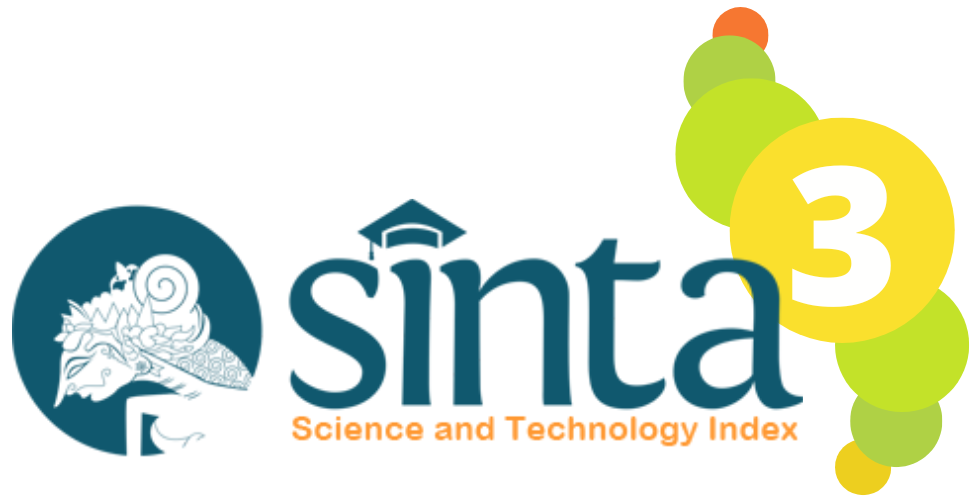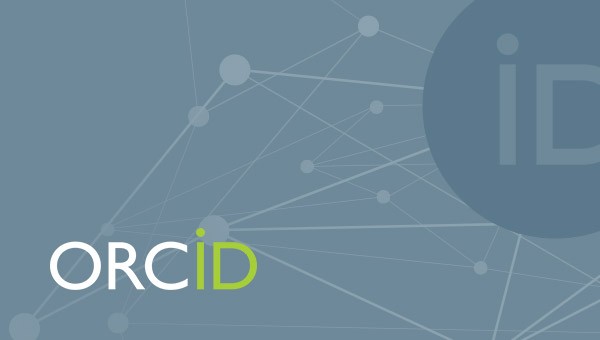Analysis of Rainfall Distribution and Climate Classification in Response to Flood Events in Lebong Regency, Indonesia
DOI:
10.29303/jpft.v11i1.8740Published:
2025-05-16Issue:
Vol. 11 No. 1 (2025): January-JuneKeywords:
Flood, Rainfall, ClimateArticles
Downloads
How to Cite
Downloads
Metrics
Abstract
This study aims to analyze the distribution and time series of rainfall in Lebong Regency, using a case study of the flood event on April 16, 2024, and to analyze the condition of climate change in Lebong Regency from 2014 to 2024. This research uses daily rainfall data to examine flood events and monthly data over 11 years from 2014 to 2024 for climate classification analysis with 10 rainfall observation stations using the Schmidt-Ferguson method. The results of the data processing were analyzed using descriptive and quantitative methods. Based on the research results, it was found that the distribution of rainfall before, during, and after the flood event experienced a significant change. Before the incident, the lowest rainfall in Lebong Regency was recorded at the Bungin, Gunung Alam, Rimbo Pengadang, and Semelako Atas Stations with a value of 0 mm/day (no rain). Rainfall increased on the day of the flood in several sub-districts, with the highest recorded at the Lemeu Station in Uram Jaya sub-district, reaching 101 mm/day. Meanwhile, after the day of the flood, the rainfall was 12 mm/day. Meanwhile, the climate classification based on the Schmidt-Ferguson method shows that the rainfall in Lebong Regency falls into the wet to very wet climate category. The very wet climate category in Lebong Regency is represented by the Bungin station, with rainfall amounting to 1166 mm/month in January 2020. Based on the 11-year average data, the highest rainfall occurs in November, amounting to 537.58 mm/year. The study also contributes to understanding local flood risk based on long-term rainfall classification, which has rarely been explored in the Bengkulu region.
References
Antara, (2024) https://www.antaranews.com/berita/4066917/bpbd-kabupaten-lebong-hitung-kerugian-akibat-banjir-bandang).
Ajr, E. Q., & Dwirani, F. (2019). Menentukan Stasiun Hujan dan Curah Hujan dengan Metode Polygon Thiessen Daerah Kabupaten Lebak. Jurnal Lingkungan Dan Sumberdaya Alam, 2(2), 139–146. https://ejournal.lppm- unbaja.ac.id/index.php/jls/article/view/674/387
Arham, M., Arsyad, M., & Palloan, P. (2015). Analisis Karakteristik Curah Hujan Dan Tinggi Muka Air Daerah Aliran Sungai (Das) Pute Rammang-Rammang Kawasan Karst Maros. Jurnal Sains Dan Pendidikan Fisika (JSPF), 11(1), 82–87.
Ariska, M., Akhsan, H., Muslim, M., Romadoni, M., & Putriyani, F. S. (2022). Prediksi Perubahan Iklim Ekstrem di Kota Palembang dan Kaitannya dengan Fenomena El Niño-Southern Oscillation (ENSO) Berbasis Machine Learning. JIPFRI (Jurnal Inovasi Pendidikan Fisika Dan Riset Ilmiah), 6(2), 79–86. https://doi.org/10.30599/jipfri.v6i2.1611 DOI: https://doi.org/10.30599/jipfri.v6i2.1611
Diah, H., Rajiatul J., C. V., Yulianti, F., Azizah, D. R., Maliah, N., & Fathiya, N. (2023). Penerapan Klasifikasi Iklim Schmidt Ferguson untuk Kesesuaian Tanaman Kurma di Daerah Lembah Barbate Kabupaten Aceh Besar. Biologi Edukasi: Jurnal Ilmiah Pendidikan Biologi, 15(1), 29–36. https://doi.org/10.24815/jbe.v15i1.32410 DOI: https://doi.org/10.24815/jbe.v15i1.32410
Findayani Aprilia. (2018). Kesiap Siagaan Masyarakat Dalam Penanggulangan Banjir. Jurnal Media Infromasi Pengembangan Ilmu Dan Profesi Kegeografian, 12(1), 102–114. https://journal.unnes.ac.id/nju/index.php/JG/article/view/8019
Ismail, M. R., Zakaria, A., & Susilo, G. E. (2020). Analisis Pengaruh Anomali Iklim Terhadap Curah Hujan Di Provinsi Bengkulu. REKAYASA: Jurnal Ilmiah Fakultas Teknik Universitas Lampung, 24(1), 10–14. https://doi.org/10.23960/rekrjits.v24i1.11 DOI: https://doi.org/10.23960/rekrjits.v24i1.11
Laimeheriwa, S., Madubun, E. L., & Rarsina, E. D. (2020). Analisis Tren Perubahan Curah Hujan dan Pemetaan Klasifikasi Iklim Schmidt - Ferguson untuk Penentuan Kesesuaian Iklim Tanaman Pala (Myristica fragrans) di Pulau Seram. Agrologia, 8(2). https://doi.org/10.30598/a.v8i2.1012 DOI: https://doi.org/10.30598/a.v8i2.1012
Marcellina, R. J., Johan, H., Sari, A. S. P., Nazari, A. A., Waini, T. S. J., & Marlina, I. (2024). Pemanfaatan Sumber Daya Alam Kabupaten Lebong: Sumber Daya Pangan Rebung Bambu sebagai Bahan Baku Utama Pembuatan Lemea (Makanan Tradisional Kabupaten Lebong). BIOEDUSAINS: Jurnal Pendidikan Biologi Dan Sains, 7(1), 46–57. https://doi.org/10.31539/bioedusains.v7i1.8741 DOI: https://doi.org/10.31539/bioedusains.v7i1.8741
Miftahuddin. (2016). Analisis Unsur-unsur Cuaca dan Iklim Melalui Uji Mann-Kendall Multivariat. Jurnal Matematika, Statistika, & Komputasi, 13(1), 26–38. https://journal.unhas.ac.id/index.php/jmsk/article/download/3476/2004
Narulita, I. (2020). Pengaruh ENSO dan IOD pada Variabilitas Curah Hujan diDAS Cerucuk, pulau Belitung. Jurnal Tanah Dan Iklim, 41(1), 45. https://doi.org/10.21082/jti.v41n1.2017.45-60 DOI: https://doi.org/10.21082/jti.v41n1.2017.45-60
Nurdin, L., & Dinda A.G, A. (2020). Evaluasi dan Perbaikan Sistem Drainase serta Pengendalian Banjir Perkotaan (Studi Kasus Limbangan Wetan, Limbangan Kulon, Kelurahan Brebes, Gandasuli, Pasar Batang). Infratech Building Journal (IJB), 1(01), 11–20. https://jurnal.umus.ac.id/index.php/ibj/article/view/297/ibj
Nurlatifah, A., Hatmaja, R. B., & Rakhman, A. A. (2023). Analisis Potensi Kejadian Curah Hujan Ekstrem di Masa Mendatang Sebagai Dampak dari Perubahan Iklim di Pulau Jawa Berbasis Model Iklim Regional CCAM. Jurnal Ilmu Lingkungan, 21(4), 980–986. https://doi.org/10.14710/jil.21.4.980-986 DOI: https://doi.org/10.14710/jil.21.4.980-986
Pabalik, I., Ihsan, N., & Arsyad, M. (2015). Analisis Fenomena Perubahan Iklim dan Karakteristik Curah Hujan Ekstrim di Kota Makassar. Jurnal Sains Dan Pendidikan Fisika, 11(1), 88–92.
Pratama, G. S., Lanya, I., & Sardiana, I. K. (2023). Pemetaan Klasifikasi Iklim Schmidt-Ferguson dan Kesesuaian Agroklimat Tanaman Cabai Merah (Capsicum annuum) di Provinsi Bali. Agrotrop : Journal on Agriculture Science, 13(2), 170. https://doi.org/10.24843/ajoas.2023.v13.i02.p02 DOI: https://doi.org/10.24843/AJoAS.2023.v13.i02.p02
Author Biographies
Rospita Naomi Limbong, University of Bengkulu
Physics Department
Anang Anwar, Meteorology, Climatology, and Geophysical Agency
Meteorology, Climatology, and Geophysical Agency, Bengkulu
Septi Johan, Universitas of Bengkulu
Physics Department
Lizalidiawati Lizalidiawati, Universitas of Bengkulu
Physics Department
License
Copyright (c) 2025 Rospita Naomi Limbong, Anang Anwar, Septi Johan, Lizalidiawati Lizalidiawati

This work is licensed under a Creative Commons Attribution-ShareAlike 4.0 International License.
Authors who publish with Jurnal Pendidikan Fisika dan Teknologi (JPFT) agree to the following terms:
- Authors retain copyright and grant the journal right of first publication with the work simultaneously licensed under a Creative Commons Attribution License 4.0 International License (CC-BY-SA License). This license allows authors to use all articles, data sets, graphics, and appendices in data mining applications, search engines, web sites, blogs, and other platforms by providing an appropriate reference. The journal allows the author(s) to hold the copyright without restrictions and will retain publishing rights without restrictions.
- Authors are able to enter into separate, additional contractual arrangements for the non-exclusive distribution of the journal's published version of the work (e.g., post it to an institutional repository or publish it in a book), with an acknowledgement of its initial publication in Jurnal Pendidikan Fisika dan Teknologi (JPFT).
- Authors are permitted and encouraged to post their work online (e.g., in institutional repositories or on their website) prior to and during the submission process, as it can lead to productive exchanges, as well as earlier and greater citation of published work (See The Effect of Open Access).










